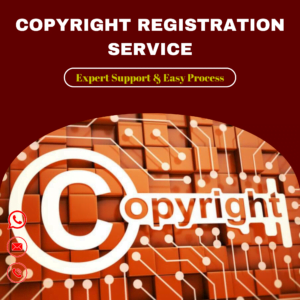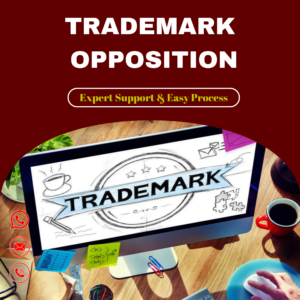Trademark Objection Process in India
In India, the trademark objection step is significant during the process of registering a trademark. At this point, the officer carefully checks your chosen brand name to ensure it meets all the rules. If there are any problems or issues, they will let you know. It’s essential to fix these issues to ensure your brand name gets registered without problems. This ensures your brand name follows the trademark law and isn’t too similar to other brand names. With help from IndiaFilings, dealing with these issues is easier, helping you get your trademark registered smoothly.
What’s a Trademark?
Before diving into trademark objections, let’s understand what a trademark is. In India, a trademark can be a unique sign, picture, or name that shows people who made a product or offered a service. It is a business’s special ID showing its brand and quality. Registering your trademark means you get special rights to use it, and others can’t use it without your approval.
Trademark Registration undergoes the following steps:
A registered trademark cannot be used by any third person without authority, thus protecting it from any infringement.
Trademark Objection
As mentioned above, Upon submitting a trademark application to the Indian Trademark Office, it undergoes a rigorous examination. If the officer identifies inconsistencies or potential overlaps with existing trademarks during this scrutiny, they will issue an objection. In the business context, it’s essential to understand that an objection isn’t a denial but a request for clarification or adjustment. Addressing this promptly and adequately is vital for ensuring smooth trademark registration.
If the mark contains offensive or obscene images or words, it might face objection.
Reasons for Trademark Objections
The Indian Trademark Office might object to a trademark application based on specific grounds detailed in Section 9 and Section 11 of the Indian Trademarks Act. The primary reasons are when the submitted trademarks lack uniqueness, are too descriptive and generic, or clash with previously registered or pending trademarks.
Objections Under Section 11:
This section concerns objections related to the similarity between the proposed trademark and existing trademarks.
Objections Under Section 9:
This section focuses on trademarks that might be too obvious, lack a unique character, or could be misleading.
Responding to Trademark Objections Online
The reviewing officer must confirm that the trademark application meets all necessary standards and regulations. If it doesn’t, the applicant will receive a notification, prompting a response within 30 days. The application may be denied if the response does not meet the expected standards. However, the applicant can appeal to the Intellectual Property Appellate Board if rejected.
Trademark Objection vs Trademark Opposition
It’s essential to distinguish between “objection” and “opposition.” Though often used interchangeably, they have distinct meanings. While an “objection” pertains to concerns raised by the reviewing officer about the registration process’s adherence, an “trademark opposition” is a challenge posed by a third party questioning the trademark’s validity.
When to Submit the Trademark Objection Reply
Upon receiving the examination report, filing a trademark reply within 30 days is essential. This trademark reply should be comprehensive and must address the queries raised in the examination report.
Documents required for Trademark Objection Reply Note
To address the objections effectively, the following documents should be submitted in the trademark reply note:
Trademark Objection Reply Fees
When responding to a trademark objection, it’s important to consider the associated fees. The trademark objection reply fees can vary depending on several factors, including the complexity of the objection, the need for legal assistance, and the jurisdiction in which the trademark application is filed.
IndiaFilings offers exclusive pricing for trademark applications filed through us!
How to File a Trademark Objection Reply?
Upon receiving the examination report, it’s critical to promptly submit a detailed written reply. Failing to do so may result in the application’s rejection. The response should be thorough, presenting justifications, supporting evidence, and facts, asserting that the mark meets all requirements for valid registration. If the applicant’s response convinces the reviewing officer, the trademark will be listed in the public journal. The public has four months to review and raise any opposition.
When crafting a reply, certain aspects require careful consideration:










Reviews
Clear filtersThere are no reviews yet.